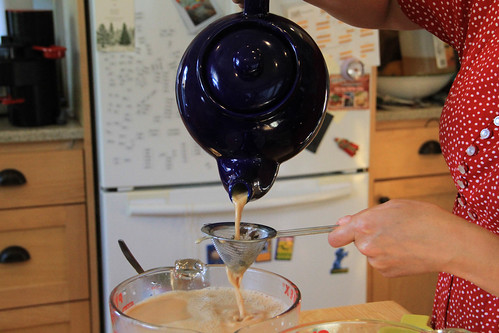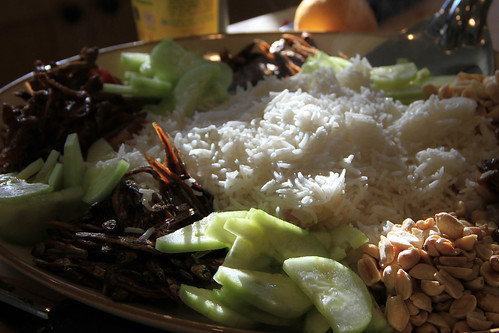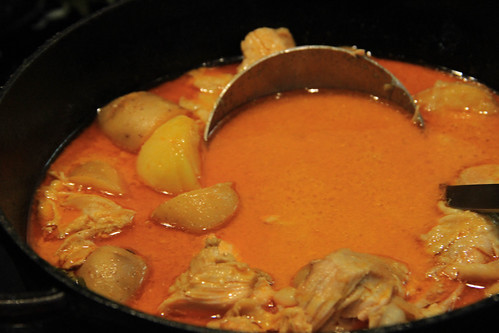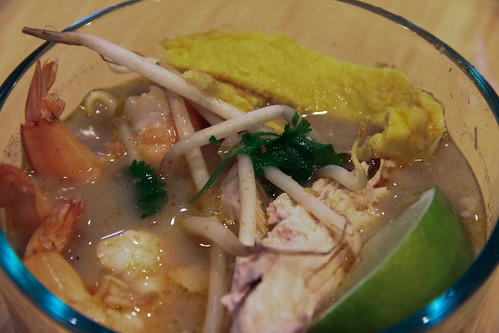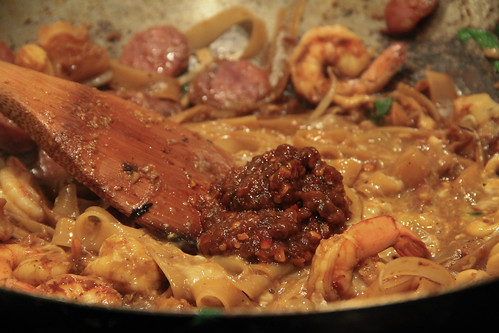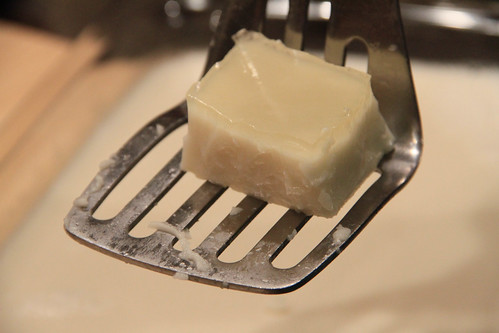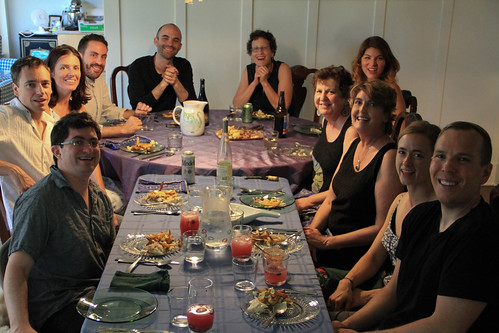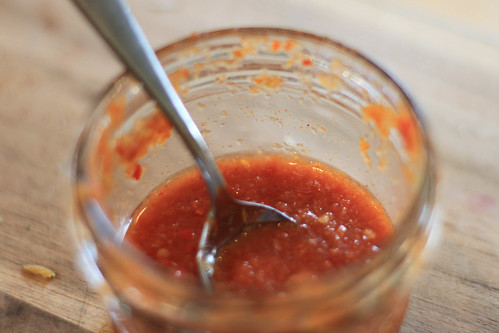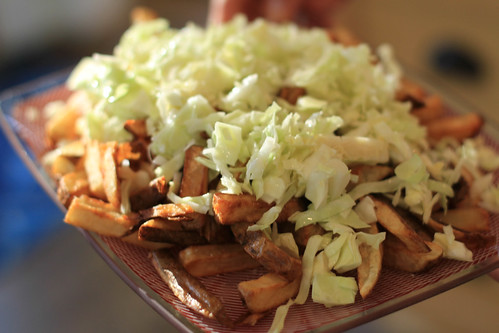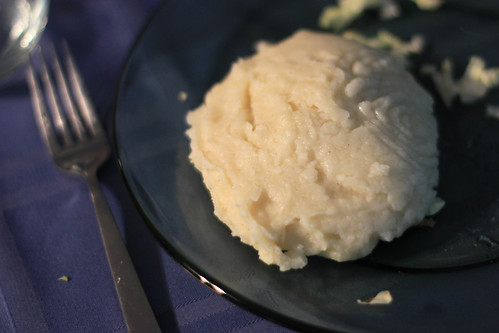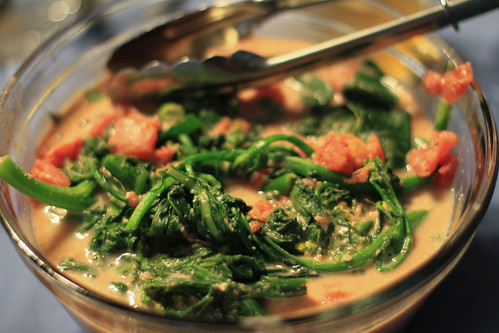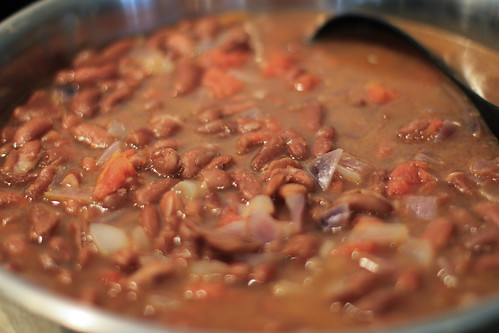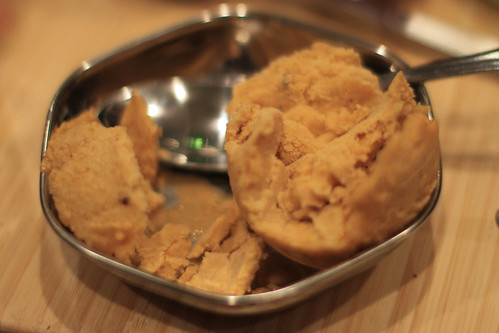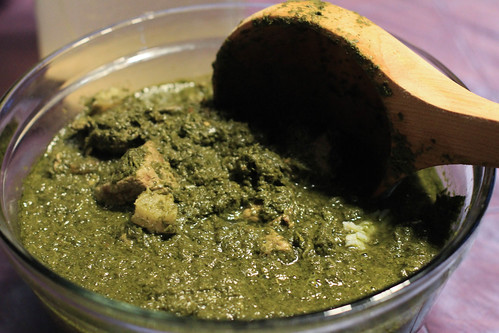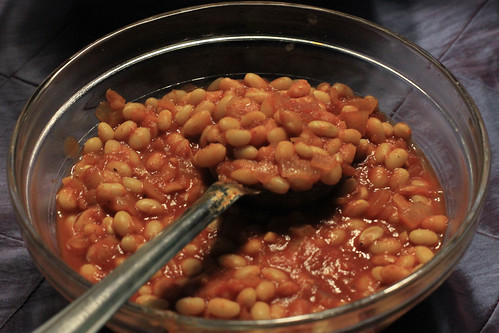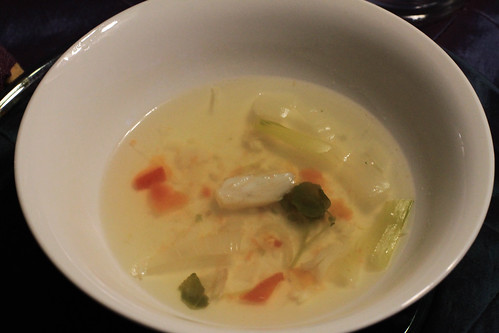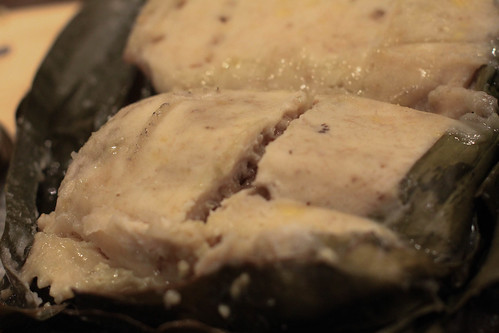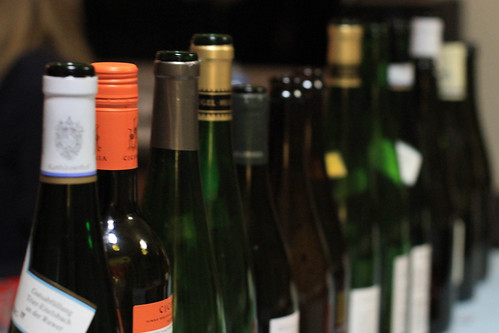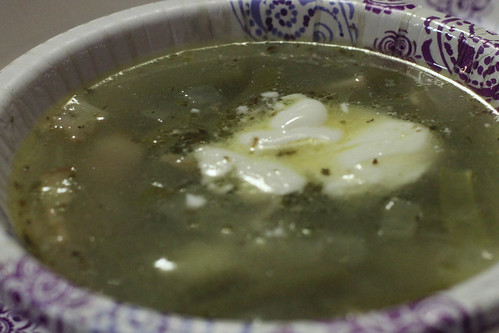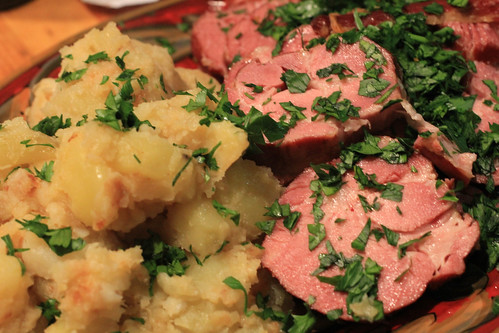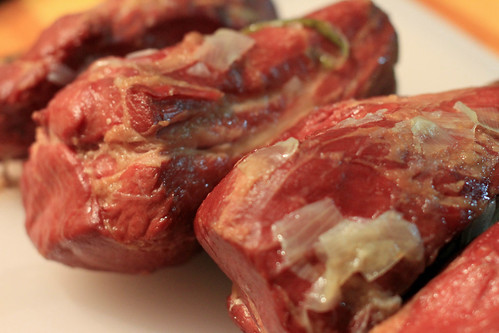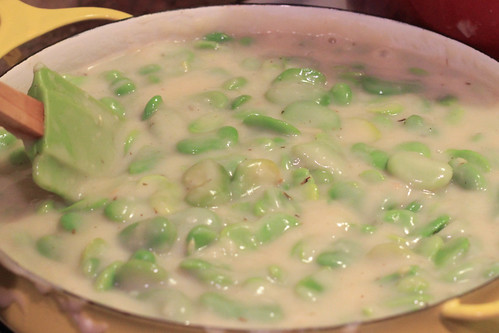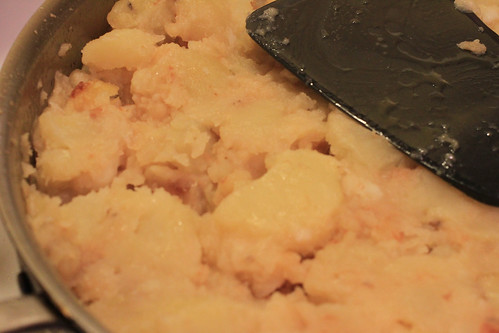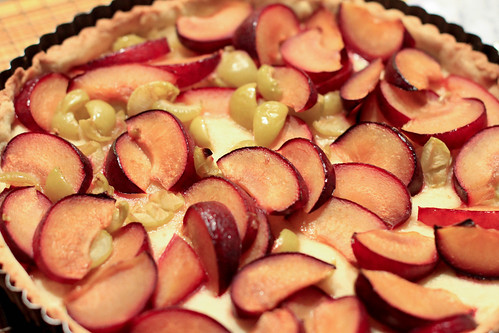If you go to the Maldives, off the southwest coast of India, for a tropical beach vacation, you're more likely to find steaks and French cheese than any of the local cuisine. I'm not entirely surprised, because the intense flavor of sun-dried and smoked tuna runs that through nearly every meal is probably a bit too intense for the holiday-package crowd. This is only the second meal for which I've ordered an ingredient online, but there's simply no way to cook Maldivian food without that uniquely prepared fish. I was able to get it from a Sri Lankan market outside of LA, which wasn't a surprise, since they've imported so-called "Maldive Fish" for nearly a millennium.
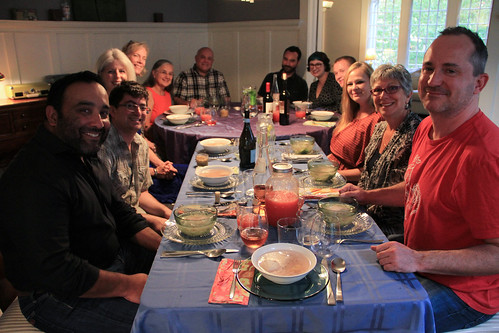
Our guests: Maxwell and his mother Leslie, Bitsy, Anne, Steve, Julie, Levi, Kal, Lauren, Karen, and Andrea.
Karaa fani | Watermelon juice | Recipe
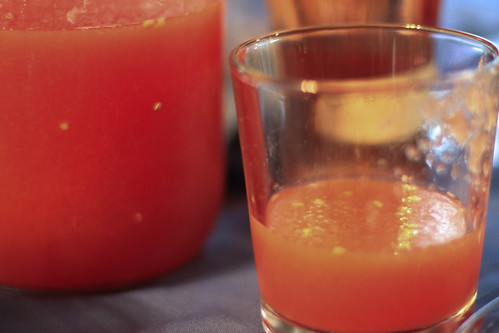
Simple as can be: watermelon pieces, water and sugar in a blender. Delicious and refreshing.
Lonumirus | Hot sauce | Recipe
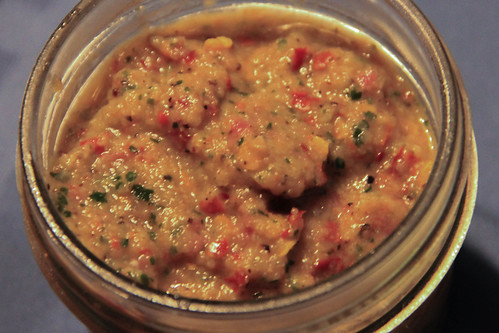
A fairly thick sauce, fairly musky from the curry leaves and cumin. A good complement to the rich umami flavors from all the dried fish.
Mas huni | Dried tuna with coconut | Recipe (scroll down)
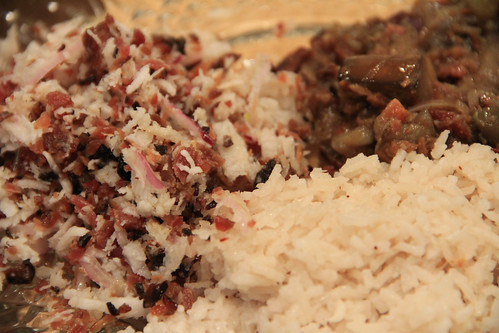
This is apparently an extremely common dish. Although the Maldives imports much of its food, this can be made with pretty much entirely local ingredients: dried fish, coconut, onion, chilies, and lime. It's also super simple to throw together. It's a unique textural mix of semi-jerky-like flaked fish, crunchy onions, and slightly chewy coconut. It was fun to eat, and pretty tasty.
Bashi hiki riha | Eggplant dry curry | Recipe
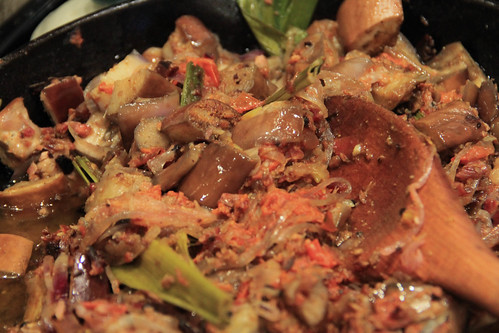
This dish shows the dried tuna in another light, as a flavoring moreso than the main event. This was a mess of eggplant and various veggies and spices. The term "dry" in the translation doesn't mean it's not moist, but rather that it isn't a saucy curry. This was a pretty intense and aromatic dish that needed some rice to balance it out.
Kaliya birinji| Spiced rice | Recipe
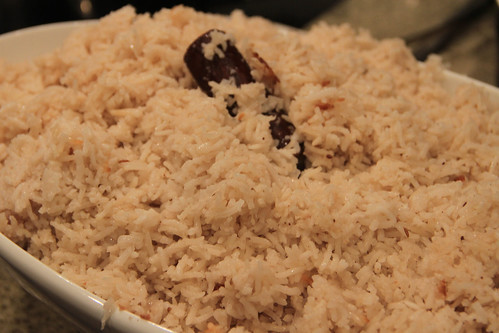
As there's barely space to grow things on these small islands, the traditional means of getting rice is to trade for it with that dried tuna. This dish is hardly a daily affair, with an indulgent assortment of spices as a hefty dose of coconut milk. But it's gentle and mild in the mouth, marrying well with the other dishes, especially the eggplant.
Pirini | Rice pudding | Recipe
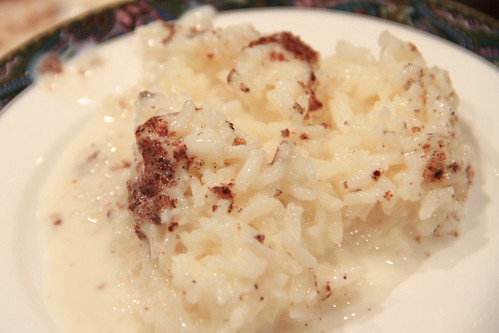
This rice pudding would seem familiar to Western tastes — sugar, milk, vanilla, mild spices — but for one flavor unique to the tropics, pandan leaf, which imparts a gentle yet haunting nutty flavor. Compared with the intense flavors of the rest of the meal, this made for a nice wind-down.

